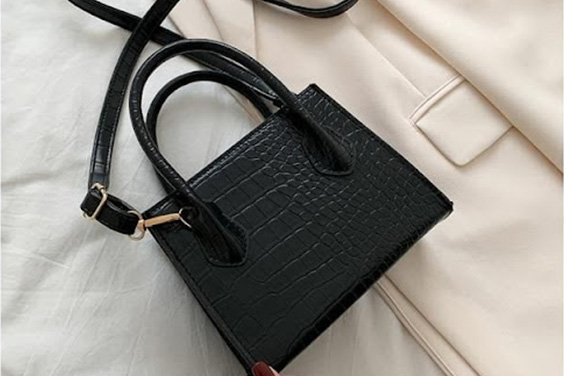
What you will learn in this post?
- Sample Types
- Sample Specifications
- Shipping the samples
- Testing the samples
- Managing the samples
1.Sample types

There are a variety of different types of samples. Below is a list with a brief description of some of the most common sample categories. The samples can be different ones. Either way, the same sample can be used in different applications.
PP Sample

PP sample is short for Pre-production sample. PP sample is built prior to starting bulk production. The PP sample can be the final sample after times of testing, correction, and confirmation.
There can be several versions of PP samples. After the PP sample is made, the vendor sends the sample to you (buyer) for evaluation. You can check the sample details, workmanship, specifications and much more. If the PP sample works well, it will be how your mass production process as per. In case it doesn’t meet some of your requirements, you may ask for remaking and reshipping for the PP sample.
PP sample is VERY important because it will be the standard and criteria for bulk production, especially if it’s a newly designed product OR if you are working with a new supplier.
Reasons are:
- No PP sample, no physical proof/reference
You talk with the vendor and they agree to create the product whatever you require. It doesn’t mean the vendor will actually do what they say. You don’t know whether they are going to cut the corners or not.
Sometimes, the vendor can be too lazy to alter to your requirement simply because it takes more time and it’s not what their normal process goes about. They don’t think it a big deal due to the small difference and it’s likely for them to produce first and report afterward.
- No PP sample, no clear standard
Without the PP sample, the vendor may not fully understand your detail requirements. When there’s obscure, the vendor can do something not proper. There can be misunderstanding or shortcuts.
- One minor error, you will lose heavily
Revise the PP sample details V.S. Correct your bulk order. We can imagine how troublesome it can be. The loss will be on you, the importer / the buyer. The vendor will find every excuse to avoid the responsibility.
Quality Sample
The quality sample may be different from how the bulk order will be made. It is used for the quality check.
When the vendor has difficulty in completing your sampling requirement ( e.g. Color availability, very high sampling cost), but you are in a hurry to get a sample. You can try to ask for a similar sample for quality reference.
Sealed Sample
A sealed sample is used for inspection reference.
Assume the scenario that your order will be inspected. Ask your vendor to get one of the PP samples out, put it into some bag, seal it with your company logo, name tape. In some cases, autograph and chop on it. No one is allowed to open the bag after it’s sealed. You can leave it in the factory or have it shipped to you. Or make 2 sealed samples and both parties get one.
When the inspection is going on, the sealed sample will be used to check whether the bulk order products are made as per the sealed sample.
Testing Sample
Testing sample is normally for lab testing. It can be shipped to the lab or to you. The lab or your engineering / technical department will test the sample for necessary safety, standard, compliance etc. Sometimes you may need to take several sets of testing samples from the bulk cargo.
Promotional Sample
The promotional sample can be used for taking photos and shooting videos and having copywriter creating marketing content. Then display vividly on your promotional material, posters, brochures, infographics, video, ads, official website or any other marketing channels.
Production Sample
Production samples are taken from mass production products. Production sample can help to avoid in time in case the vendor cuts corners. If it’s found earlier, instead of taking the unsatisfactory bulk products, you still have some time to demand the vendor to stop mass production and start to do necessary corrections.
2.Sample specifications

Have all product details written down on the sample order document. Written is better than talked verbally. Make sure the vendor fully understand every detail of how you want the sample to be like.
b.Sample price
Why do manufacturers charge sample cost (sometimes double the bulk price or even higher)?
1) Sampling cost
The cost will be covering raw material, worker salary, sampling cost etc. It takes extra time and effort to have workers create the sample separately.
2) The supplier can’t tell whether you are a true importer or not.
The vendor needs to get an incentive to build the sample for you, which would mostly be getting orders from you. If you don’t look like a serious buyer, the vendor’s answer is a definite NO.
Do you need to pay for samples?
How much should you pay for the sample?
Well, the sample price for products in different industries vary a lot. It can be the same price or 15%-20% higher or 100% higher than bulk unit price. Take furniture piece as an example, it’s not uncommon to see two to three times higher unit price to build a sample.
So for low-value products, the sampling won’t be too big of a problem. Some sellers are happy to offer free sample for low-value products and ask importer to take care of shipping cost.
Whereas if it is a high-value product, it takes some time to decide all details beforehand to save as much as possible from different version samples. Some vendors may charge you the sample cost and promise to deduct the same cost on the official order. If the sample cost is very high, you can negotiate with the manufacturer about payment way, e.g. 30% prepaid –> getting ready the tooling / mold –> 50% payment –> complete the sampling –> 20% payment
In all, I would say if it takes too much time to convince the supplier for free samples and the sample cost application is not complex, you may consider moving on.
c.Delivery Time

Keep in mind to confirm with the vendor about the sampling delivery time before placing your sample order. You don’t want to wait forever for the sample to come, especially when you need to have the sample done very soon.
3. Shipping the sample
a. Shipping way

Mostly, samples are shipped by air. It can be shipped by the manufacturer’s freight forwarder or your own courier. Take a quick comparison between the vendor’s freight offer and your courier’s price.
If the sample is heavy and with high value, you can consider to let us handle it before shipping. You can take close look at sample photos and videos and a simple report we prepare for you. If the sample is not to your requirement, we send back to the manufacturer for revisions. If it works fine, we will handle it to forwarder for shipping.
b. Sample document
Remind your vendor to mention sample info on the invoice. It can minimize the chance of being taxed or the tax value. It can be written like this:
sample with no commercial value
samples not for reselling/retailing
samples for quality evaluation
4. Testing the sample
One of the core processes for getting a sample is to test it before you really get your products manufactured in China. You can show the sample to people around you or pre-order customers to see if the product will be marketable.

When you get the sample, utilize it and “torture” it as much as you can.
Here are some of the common things you want to check on the sample?
- Designs
- Functions
- Appearance
- Quality
- Improvement
- Much more
5.Manage samples
If you are marketing different products, you can easily get confused about which sample is from which company. You need a quick and simple system to run with. It won’t hurt much. But it can be time-consuming and get you frustrated with all the chaos.

- Ask the vendor to label on the sample. Information can cover supplier company name, phone number, product specifications and so on so forth.
- Make a tracking sheet for samples. Update information like company name, product/label number, delivery date, waybill number, sample cost and shipping cost, notes etc.
- Put away the invoice and label the sample number by your own system.
- Take photos and videos when necessary and collect necessary information into different files based on each sample.
- Stock the samples properly by category/your system so you can find it easily.
This is pretty much how samples can be handled typically. One more quick tip is that place your sample order only when you have a thorough and firm idea to cooperate with this vendor.
Feel free to ask the factory to send you clear photos and videos of their factory samples if possible. Then you can get a quick idea about them.
Related Posts
- Pre-Order Checklist To Avoid You Making Losses
- Shipping From China, The Right Way!
- How to Negotiate with Suppliers[Infographic]
- How to find the best suppliers in China?
- Source from a Chinese trading company, sourcing company or manufacturer by yourself?
- Top 4 must-do before you import products from China




